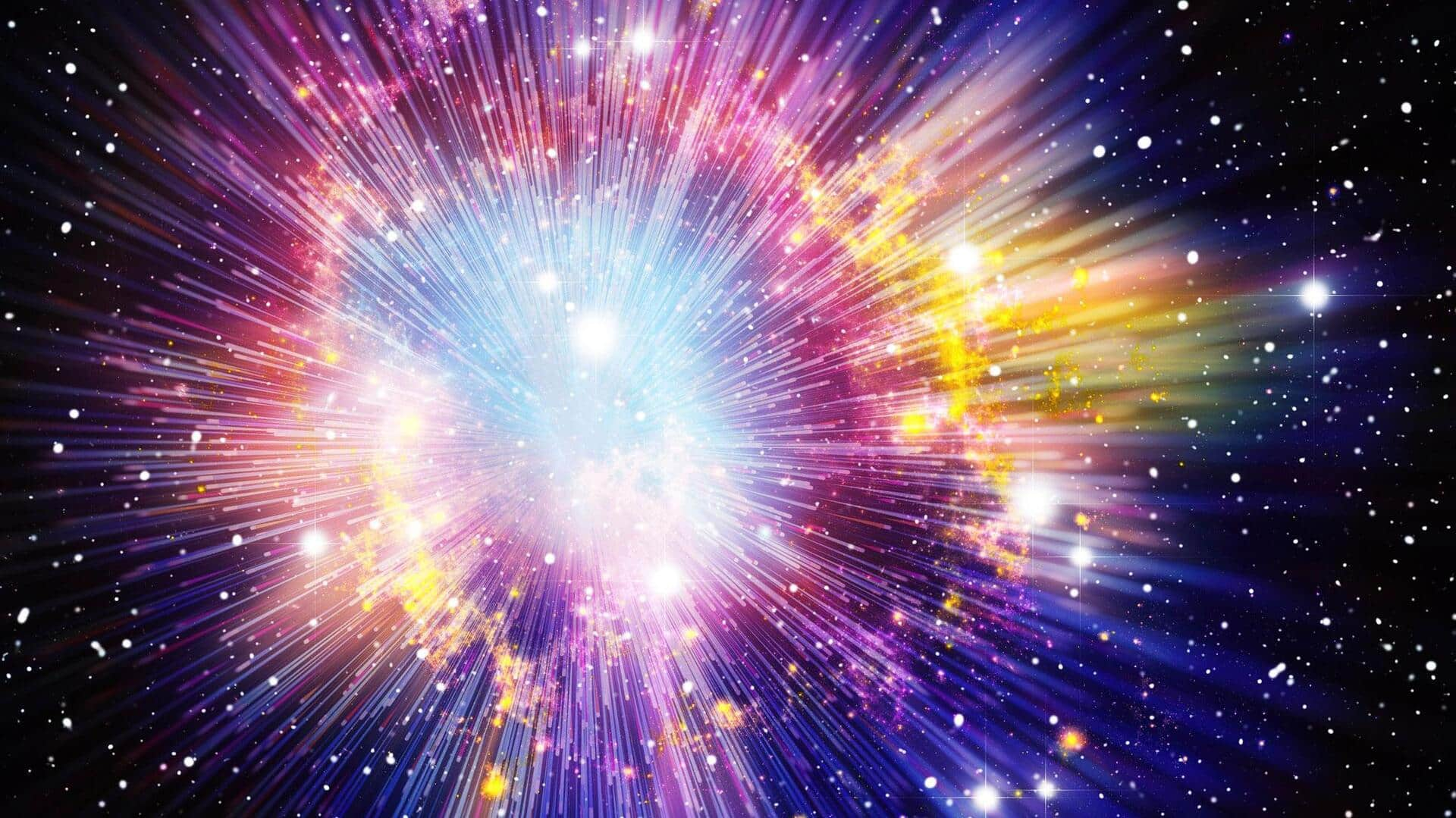
First stars born after Big Bang might have been discovered
What's the story
Astronomers from the University of Toledo, Ohio, led by Ari Visbal, think they may have found the first stars that formed after the Big Bang. The discovery was made after a detailed analysis of previous observations by the James Webb Space Telescope (JWST) of a distant galaxy called LAP1-B. These early stars are known as Population III (Pop III) stars and were thought to be composed mostly of helium and hydrogen with small amounts of lithium.
Star formation
What are Pop III stars?
Pop III stars are believed to have formed about 200 million years after the Big Bang. They are extremely rare now as they went extinct long ago. However, scientists have always hoped that the faint light from these distant and ancient objects would be detectable. Previous candidates for Population III stars were ruled out as they didn't meet three main predictions about their formation and properties.
Discovery
How did scientists confirm these were Pop III stars
The team behind this new study believes their discovery matches all three requirements for Pop III stars. They say the stellar system formed in a dark matter clump about 50 million times the Sun's mass, just as scientists predicted. The stars are also massive, ranging from 10 to 1,000 times our Sun's mass and clustered together in small groups totaling a few thousand solar masses.
Evidence
Early universe supernovae
The gas surrounding LAP1-B shows distinct spectral signatures and contains only trace amounts of metals. This supports the idea that this system is so young that some of the first massive stars had recently exploded as supernovae, polluting the gas with these early elements. However, uncertainties remain about how much material was ejected by the first supernovae and if current computer models accurately capture early universe physics.
Next steps
Roadmap for future discoveries
This study provides a roadmap for finding other distant objects, such as using JWST with gravitational lensing. This technique helped detect LAP1-B and could lead to more discoveries. The team said, "LAP1-B may only represent the tip of the iceberg in terms of the study of Pop III stars with gravitational lensing from galaxy clusters."